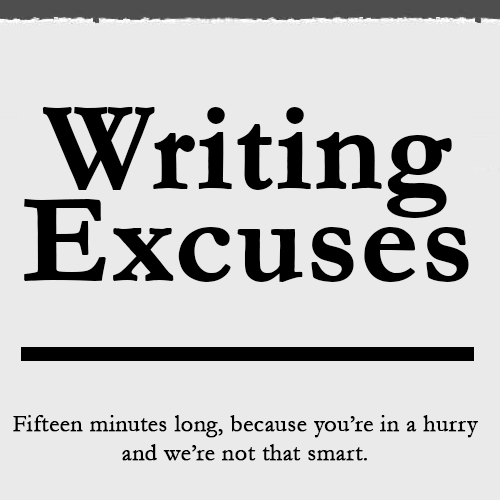Of course it can't be that simple. Yes, there is something missing in books I have written and books I plan to write. But I haven't properly identified that thing, and if I could, I might be able to find one that worked.
The idea of MICE is attractive...
...but can be misleading. These can be good analytical tools, but less useful in constructing a story because elements don't always fit neatly into the boxes we create.
There was an episode of Writing Excuses that had fun reconstructing "The Three Billy Goats Gruff" as primarily an Event story (three goats cross a bridge. There's a troll), a Character story (three goats want to cross a bridge -- the goats are our protagonists here), a Milieu story (there's a bridge with a troll under it), or an Idea story (um...don't take advice from your prey?)
This is a bit facile. The point is more the focus and the attention. If we start with the goat's longings for the meadow across the bridge, this clear goal, then we are telling a character story. If we start out depicting this setting, on the other hand...but what, then, is a scene-setting description? Or a prologue? Or a false protagonist? Or an early inciting incident?
My own star example is Jumanji: Into the Jungle; a character story (the kids gain insight and self-confidence) wrapped around a world story (they go to Jumanji) wrapped around an Event story (they fight to save the world of Jumanji).
***
It is more tempting to think in terms of a theme/idea/conceit/focus that runs through the book and underpins the action -- if possible, motivating it. Horizon Zero Dawn of course mates the player's experience with Aloy's experience in a number of ways, right down to the game mechanics -- the basic gameplay loop of killing machines for parts -- being at the basis of the world's economy, Aloy's progress through the game, and the reason why the world is so fucked at the moment (and will be so for at least one more game...Guerrilla hasn't said, but I'm personally thinking two!)
This is failing me as a tool for figuring out why I think some of the Athena Fox books worked and some didn't, though. The Japan book has the perhaps simple idea of Tatame vs. Honne; inside versus outside, private versus public, mask versus real feelings. This was not just internalized in the characters (Penny forced by the...okay, call it the Event of the story...to wear the mask and finding herself Becoming the Mask) but also in structure, with the rising action of part three being penetration ring by ring (quite literally) into the cult holding the secrets she is after.
Maybe it worked there because it was part of Becoming the Mask, and that was connected to the basic form of a spy/infiltration story. And that novel was schizoid anyhow as it really falls into five parts; an overly long prologue when the Event is just some weirdness in the background, the Training Montage which takes up most of Act II, the Tokyo sequence which is really an uneasy bridge between the training and the infiltration, the Infiltration of course, then the James Bond returns to Piz Gloria as Penny starts having high-speed snowmobile rides and fistfights with yakuza.
So what did I learn here? That either my analytical tools are no good, or the novel is too messy. Probably both.
Why do I think the Desert book is going to be any better? From outside it still looks like a mixed bag. Basically the heart is a somewhat difficult concept; the myth of the desert as an atomic wasteland. From one perspective -- the perspective Penny is introduced to as her car is stopped by one of the occasional White Sands Missile Range closures of I-70 -- is that this isn't really her America. This is military-industrial complex doing things somewhere deep in this inhospitable blasted plain.
And when she says something like that to one of the people investigating the dead body, that person snaps back with a "Try being us." "Us" being the neuvomexicanos who were once ranchers there before General Groves and others called Eminent Domain. But that's a bit of a sideline, as the desert lives and even flourishes (turns out being a closed-off military reservation is better than being farmland for some of the wildlife). And that in turn links to the idea of life -- in this case, specifically, the human species -- working their way from Lucy to a future in the stars if they don't manage to nuke themselves first (Drake Equation and Fermi Paradox).
Which brings us to nuclear secrets but these are old secrets and the key to unraveling the mystery has to do with loyalty and belonging...like the workers at Los Alamos, coming back to the mesa to sweep floors near where they once owned a house and land, but still proud to be a part of it (and probably more proud to be making a good living wage, at least by their standards).
That...seems like a mess. If you cast the net that large, draw a Venn Diagram with a pair of dividers the size of the Rio Grande, then you can fit the boxes around it. Even if it is hard to define whether this is a World or an Idea or what.
But...when I look at The Tiki Stars, I don't have something that both underlies the world-building and underlie the plot in the same way. And maybe that is key. Maybe Aloy showed the way.




No comments:
Post a Comment